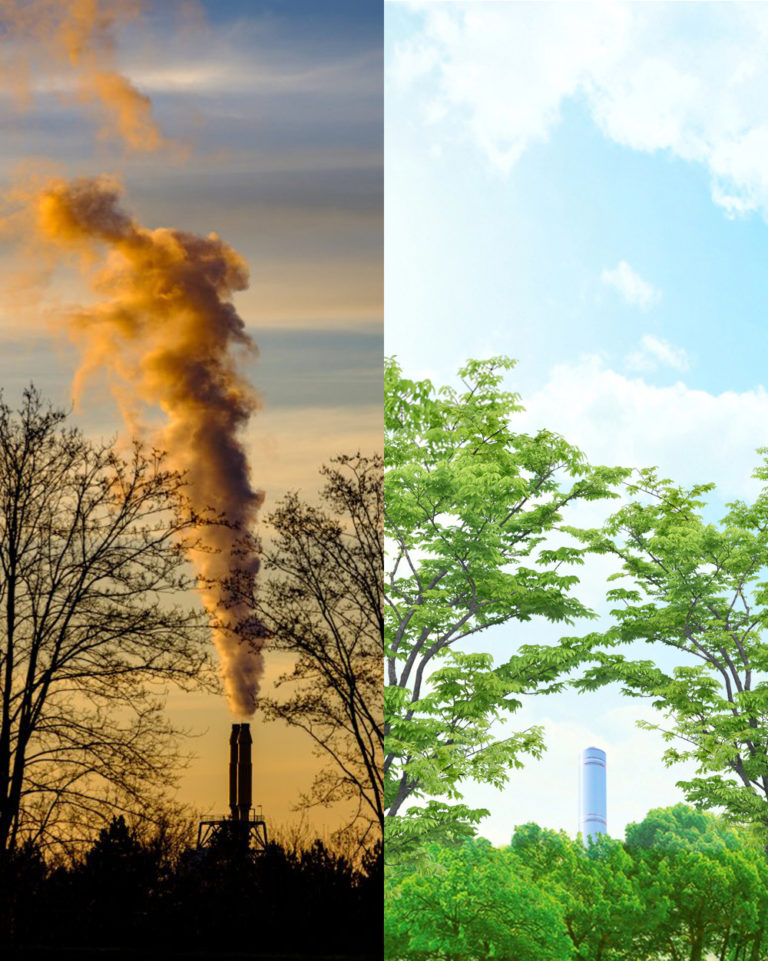The regulations for the removal of pollutants from industrial exhaust air are strict. But the longer the more, not only the regulations but also the public perception count – the image – and that perception is subjective. What counts is what you see, what you smell.
Industrial exhaust air cleaning with adiabatic air washers

The air after an adiabatic air washer is cleaner than before treatment. Water-soluble impurities are washed out. The air is cooled by evaporation and condensable impurities can be separated. However, due to the adiabatic equilibrium, the air is now almost saturated and this at a temperature of typically around 50°C. The air is then cooled by water evaporation and condensable impurities can be separated. If this air mixes with the cooler ambient air at the outlet, water vapour clouds form, even if all water droplets and aerosols have previously been separated with complex separators and electrostatic precipitators. These clouds are clearly visible and even if they have evaporated, blue smoke often remains, oil that only now condenses at the lower temperatures. This can not only be seen but can also be smelled when the cloud precipitates.
There's another way!
Countercurrent washing column with cooled water
Substances which evaporate in the thermal process can also be condensed out again if they are only sufficiently cooled. With a countercurrent washing column, which is operated with cooled water, exhaust air temperatures can be reached which are only slightly above the cooling water temperature. In this way, the dew point of the exhaust air is undercut and the resulting condensate supports the renewal of the washing water. This reduces fresh water consumption and prevents blue smoke from escaping. If odours still remain, experience has shown that this can be eliminated by adding oxidizing agents such as hydrogen peroxide or ozone to the cleaning process.
If an air/water heat exchanger is connected upstream of the washing column, not only can the required cooling water quantity be reduced, but process heat can also be fed back into the process, more than if only one heat exchanger is used.
For more information, please contact us.
